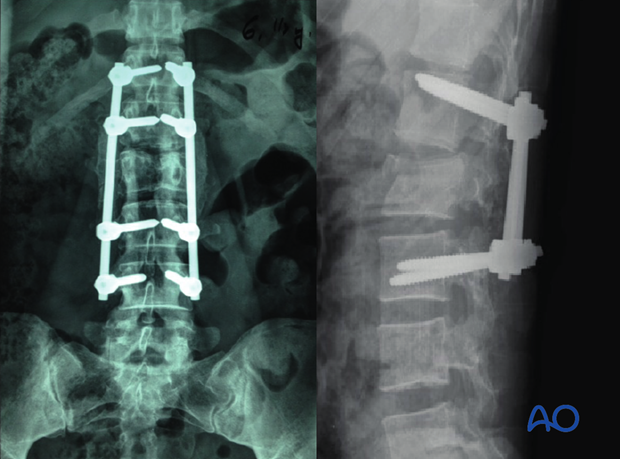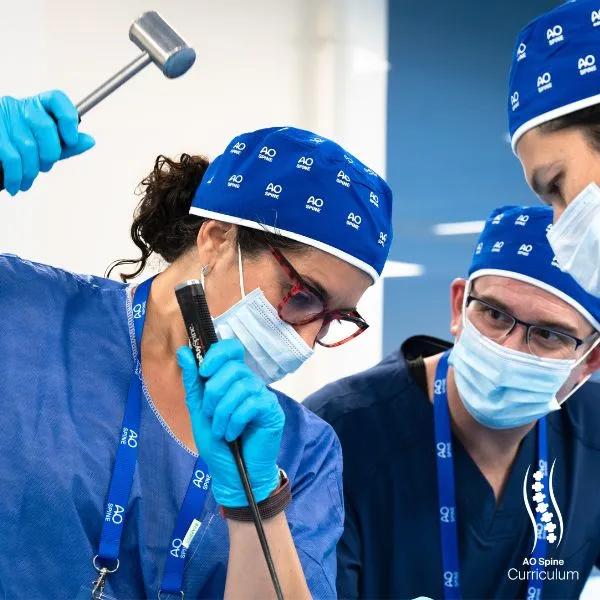Posterior short segment fixation with intermediate screws
1. Introduction
Preliminary remarks
A4 injuries are axial compression injuries and involve a fracture of the posterior wall of the vertebral body and both the superior and inferior end plates. Due to axial compression forces, vertical fracture of the lamina is usually present and does not indicate a tension band failure.
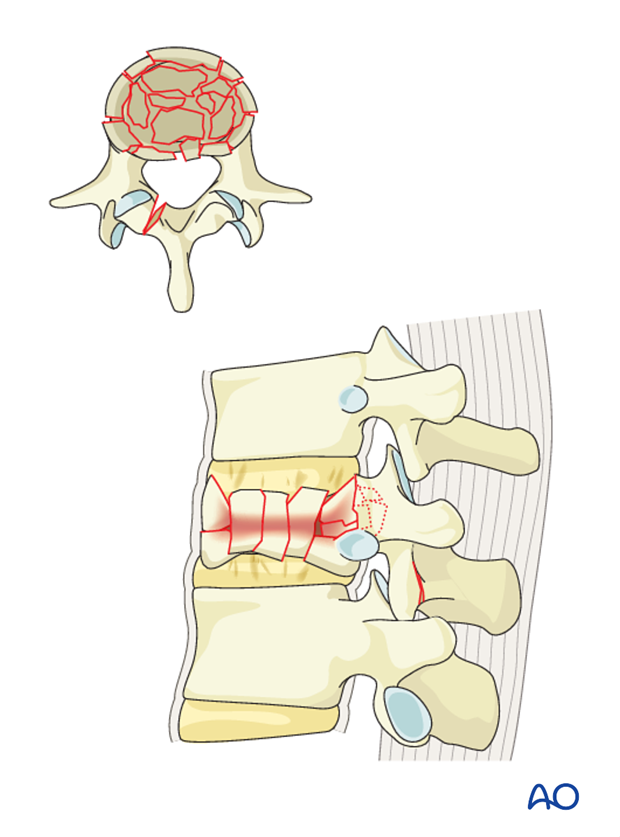
Decompression
In cases where neurological deficit is observed and compression of the spinal canal is assumed, decompression has to be performed. It should be understood that this is a step that can also result in deterioration of neurology unless very meticulously performed.
Decompression can be performed anteriorly or posteriorly. Posteriorly decompression can be indirect or direct.
Indirect decompression may be tried before performing direct decompression.
Please refer to Decompression techniques for a detailed discussion of indications for the posterior decompression techniques. (Posterior decompression)
Repair of dural laceration
More details on repair of dural laceration can be found here.
2. Patient preparation and approach
The posterior open approach to the midline is used together with the appropriate patient preparation.
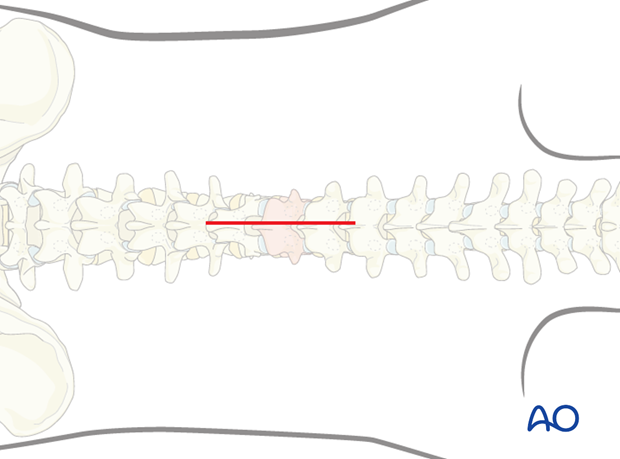
3. Closed reduction
Primary reduction is performed by positioning of the patient onto a frame to create lordosis.
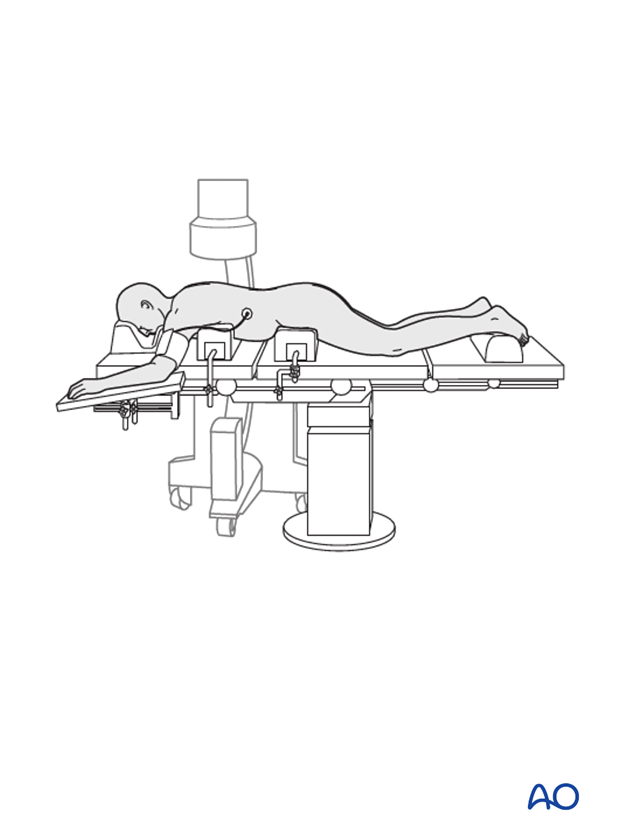
4. Reduction with intermediate pedicle screws
Preliminary remarks
The addition of intermediate screws provides more biomechanical stability to the construct. In patients with A4 injury with significant vertebral body comminution and intact pedicles, this technique is preferred.
Due to the fact that bilateral instrumentation is necessary in all cases, all steps described below are repeated on the opposite side, unless described otherwise.
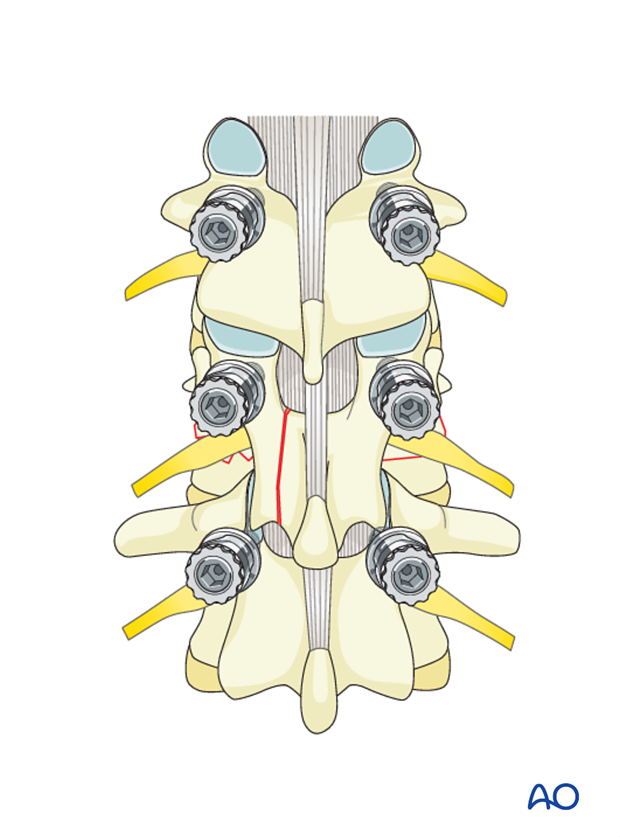
Pedicle screw insertion
Pedicle screws are inserted into the vertebrae cephalad and caudal to the fracture level on both sides. Mono- or polyaxial screws can be used.
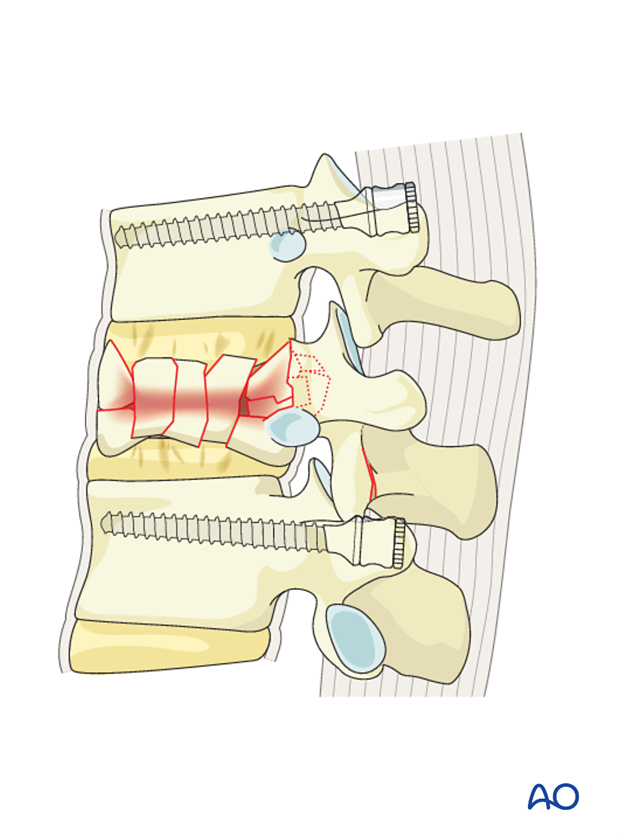
Intermediate screw insertion
Under fluoroscopic guidance, screws are also inserted into the pedicles of the fractured vertebrae ("intermediate" screws). Intermediate screws are inserted in both the pedicles of the fractured vertebra, however if a pedicle (as assessed on the CT scan) is fractured, no screw is inserted into that pedicle. If both the pedicles are injured, then this technique cannot be used.
The intermediate screws are left slightly proud compared to the screws inserted above and below, in order to be able to reduce the fracture later on.
The length of the intermediate screws is generally kept short so that it just enters the vertebral body after crossing the pedicle.
This allows an anterior reconstruction on a later date if required, without disturbing the posterior construct.
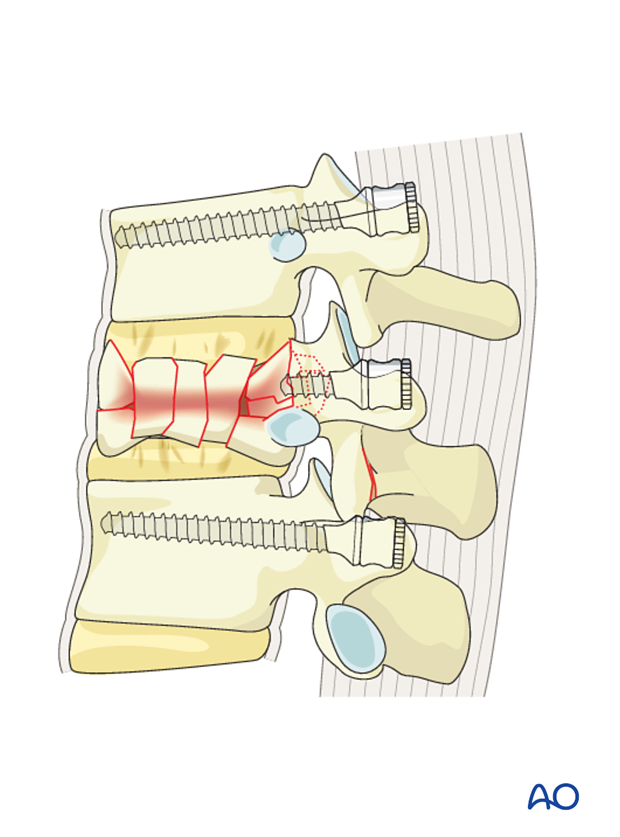
Rod contouring
The contouring of the rod depends on the site of the fracture. A rod contoured in mild kyphosis is chosen for fractures from T1-T10. A straight or a slightly lordotic rod is chosen for fractures from T11-L1, and a rod contoured to lordosis is chosen for lumbar fractures.
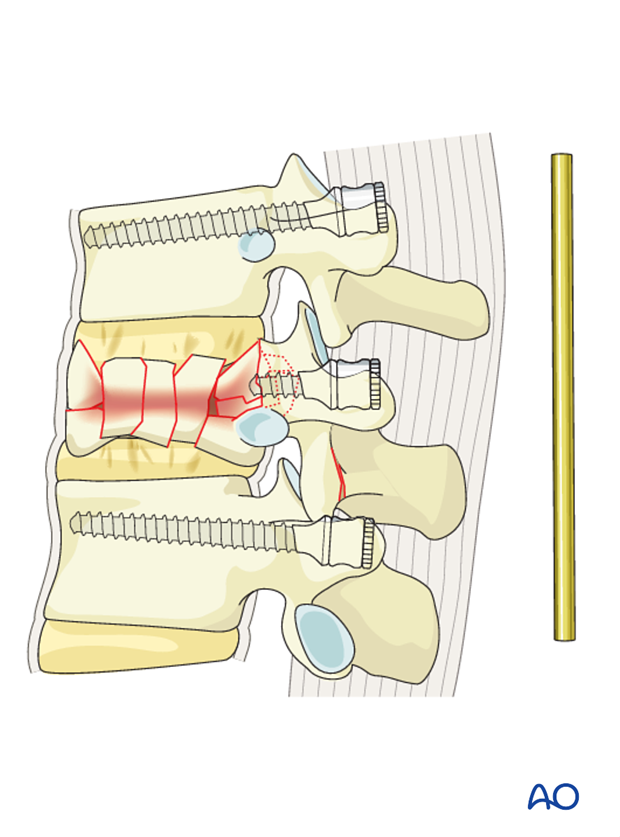
Rod insertion
The rod is introduced to the screw heads from distal to proximal and the distal screw head is tightened first. The proximal and intermediate screw heads are kept loose.
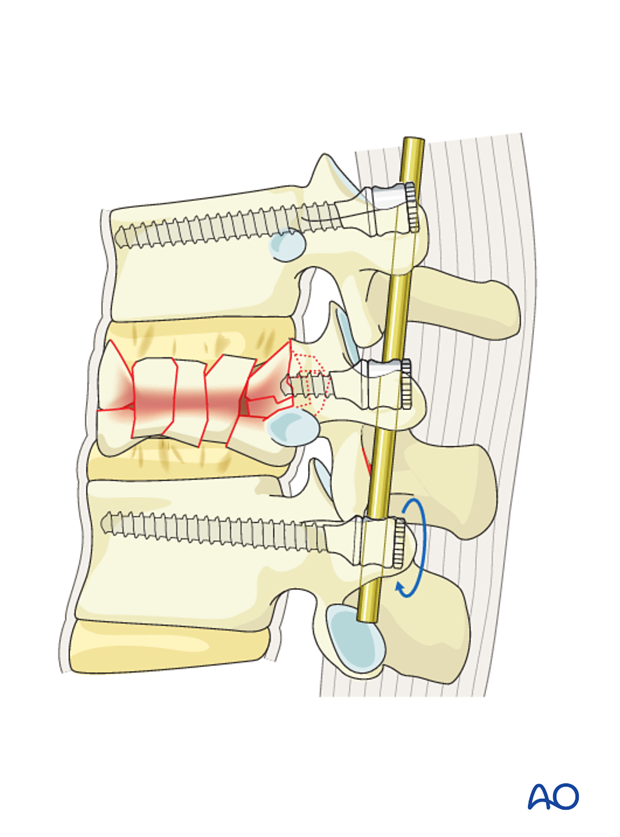
The rod is also inserted into the proximal screw heads without tightening.
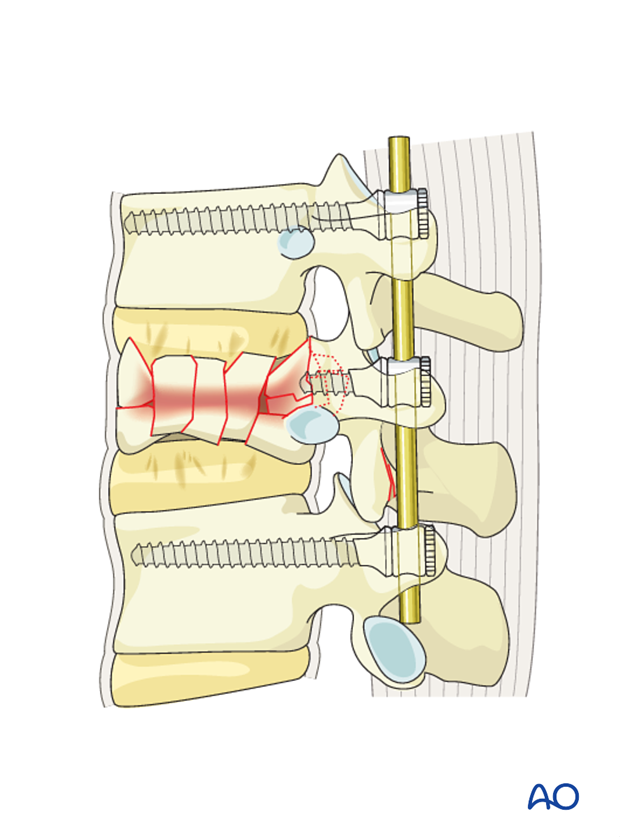
Decompression
If decompression is needed, an indirect reduction may be done at this stage. If indirect decompression proves to be insufficient, a direct decompreesion, e.g., posterior or transpedicular decompressions are undertaken. Refer to the Posterior Decompression techniques for detailed instructions. ( Posterior decompression)
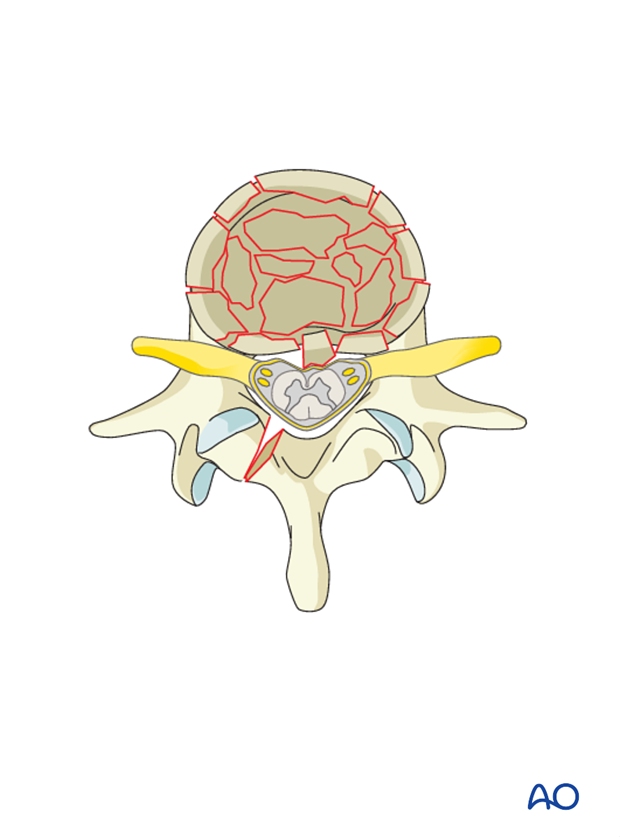
Distraction
With the help of a rod holder and a distractor, the proximal screws are distracted along the rod. This is done on both sides simultaneously.
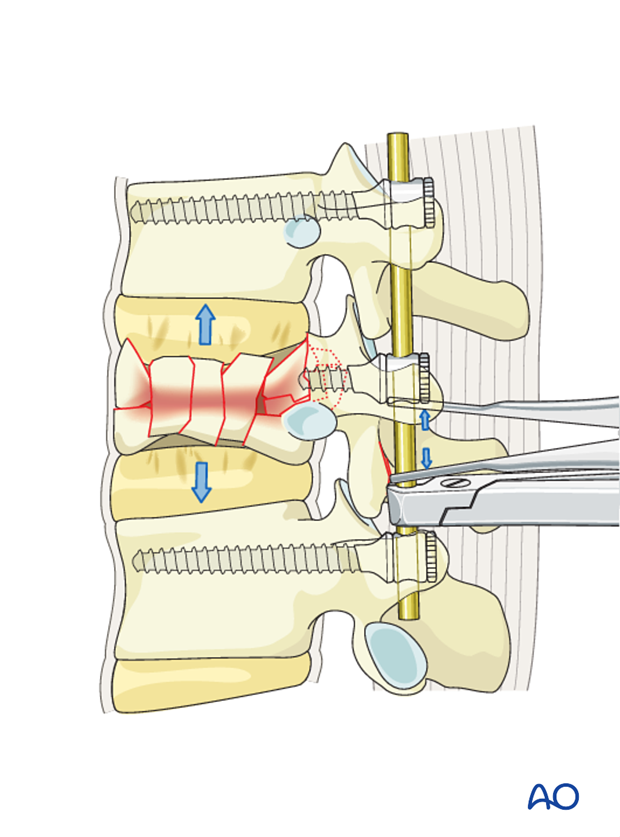
The locking heads of the proximal and intermediate screws are tightened to secure the distraction achieved.
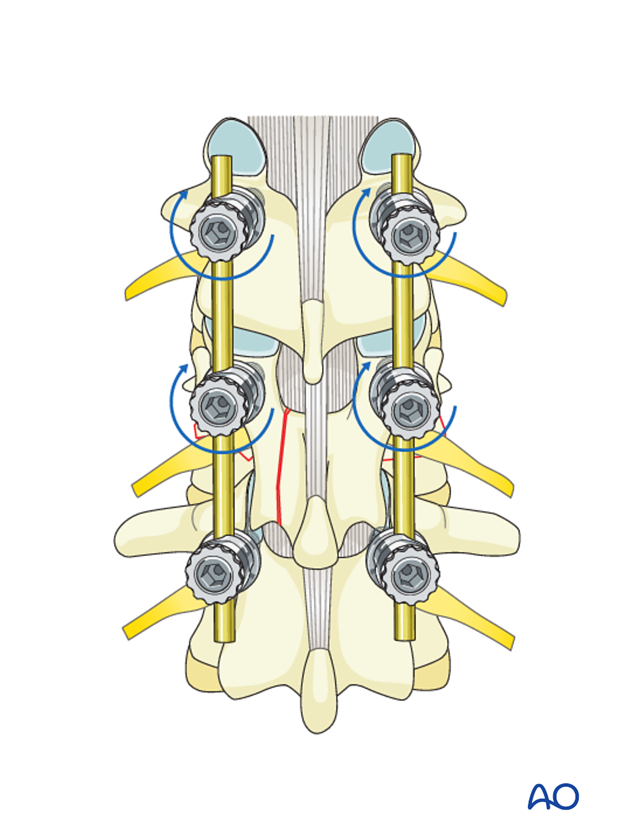
The final construct is shown from a lateral view
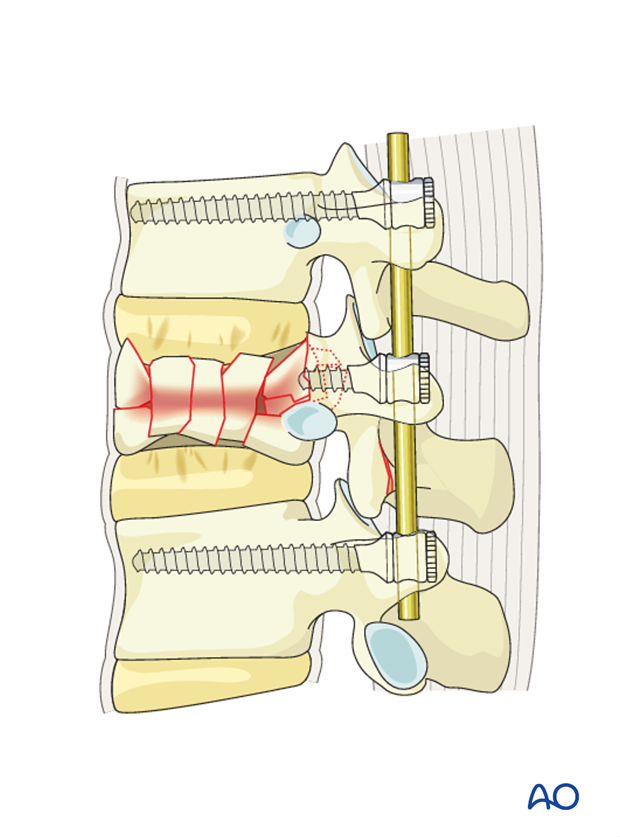
5. Fusion
Decision
Although fusion was routinely performed for all spinal fractures, its indications are now being restricted to fractures that are highly unstable.
Nonfusion fixations can be performed for A3, A4, and B1 type injuries.
Fusion is routinely performed for A2, B2, B3, and all C injuries as they are unstable injuries with extensive soft tissue and ligamentous disruption.
Nonfusion
For nonfusion surgeries, the facet joint capsule is preserved during the entire procedure.
The screws can be removed after 9 months once the fracture has healed.
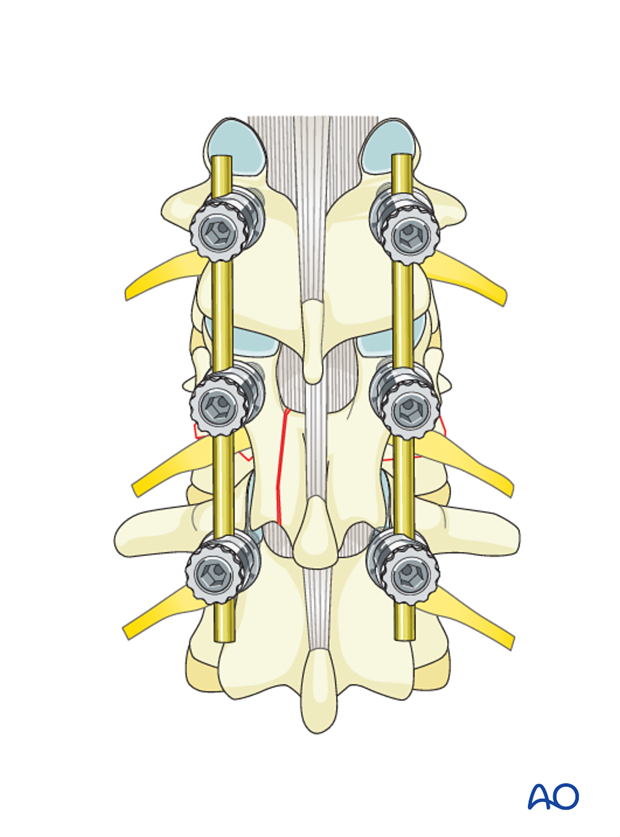
6. Intraoperative imaging
Prior to wound closure, intraoperative imaging is performed to check the adequacy of reduction, position, and length of screws and the overall coronal and sagittal spinal alignment.
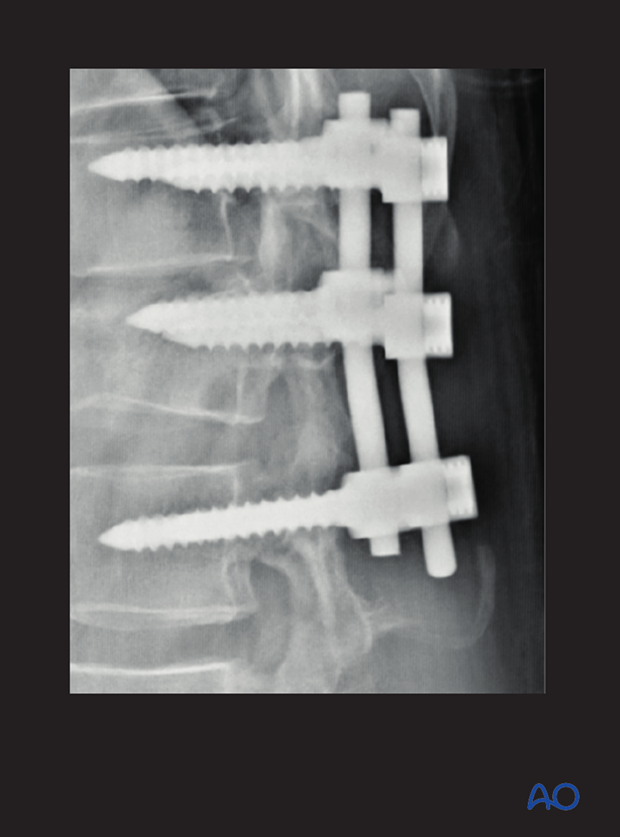
7. Aftercare for posterior procedures
Patients are made to sit up in the bed on the first day after surgery. Bracing is optional. Patients with intact neurological status are made to stand and walk on the second day after surgery. Patients can be discharged when medically stable or sent to a rehabilitation center if further care is necessary. This depends on the comfort levels and presence of other associated injuries.
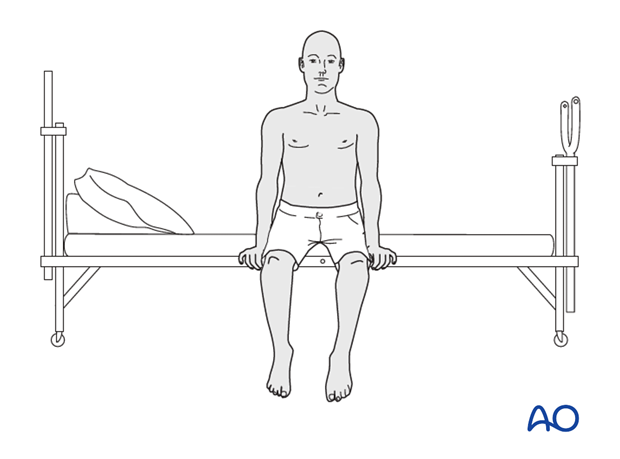
Patients are generally followed with periodical x-rays at 6 weeks, 3 months, 6 months, and 1 year. Normally, 5-10 degrees of loss of kyphosis can be observed within the first 6 months, which does not affect the functional outcomes. For nonfusion surgeries, the implants can be removed once fusion is confirmed.
